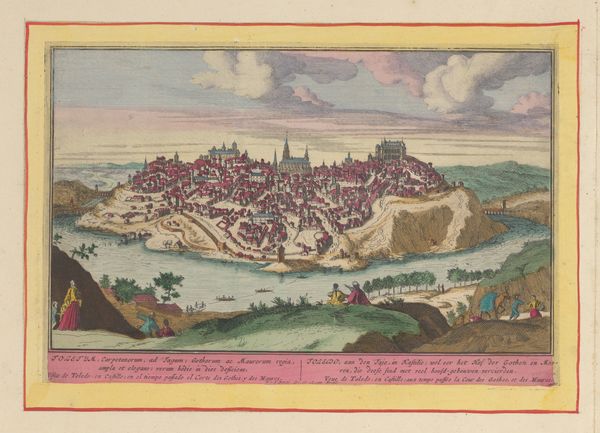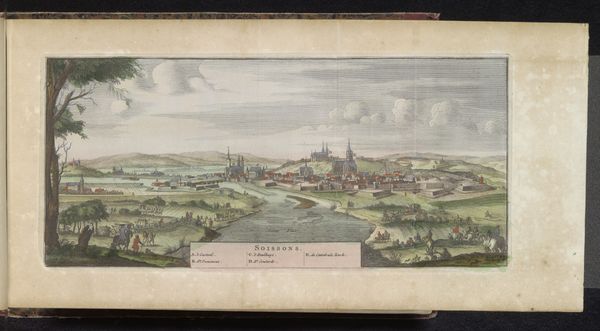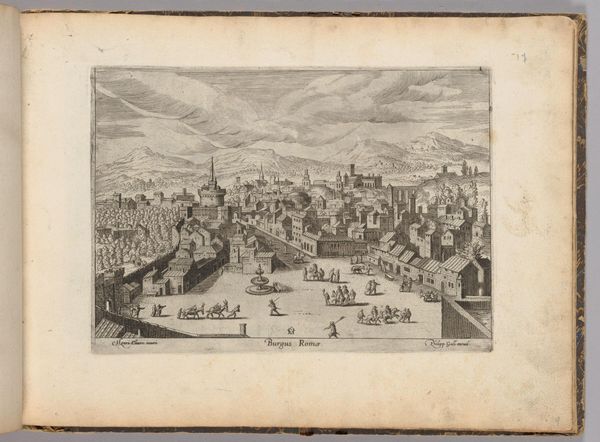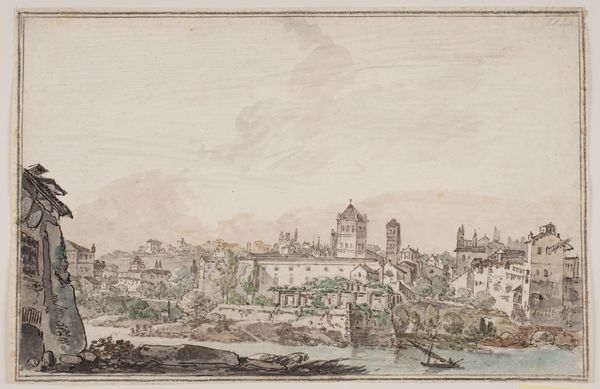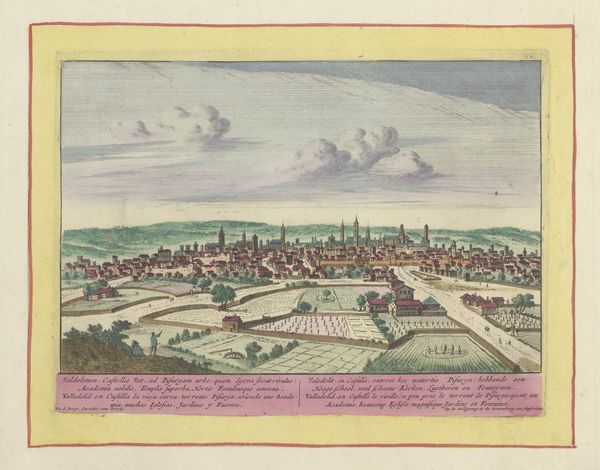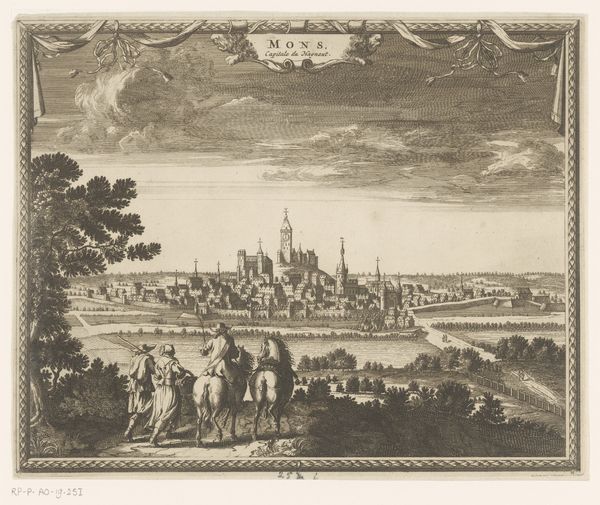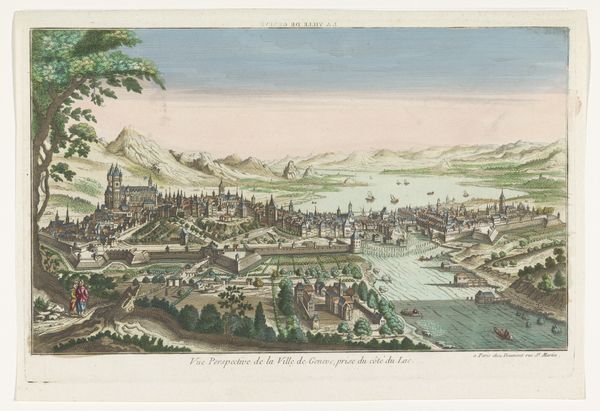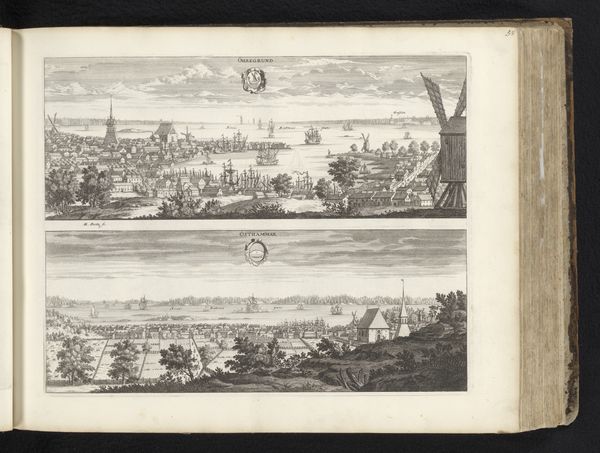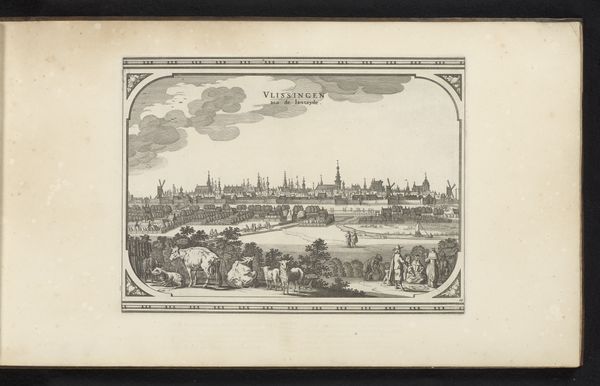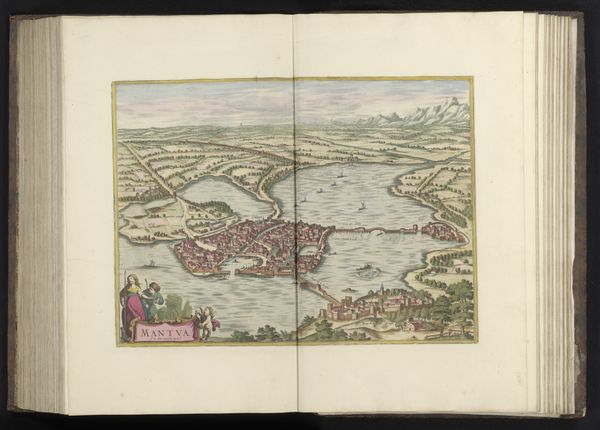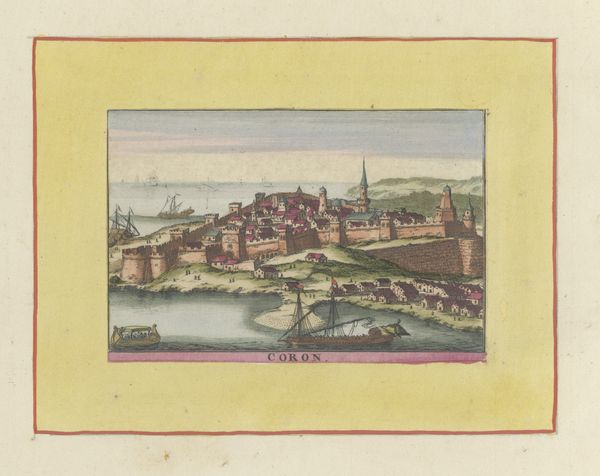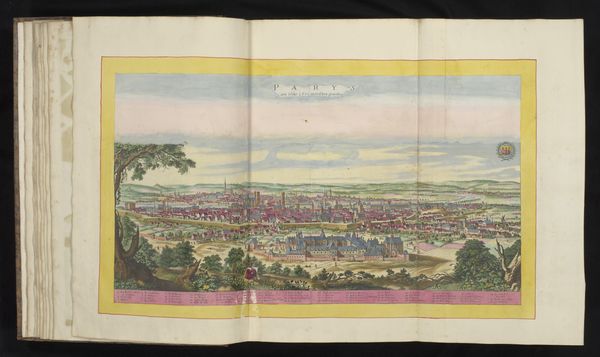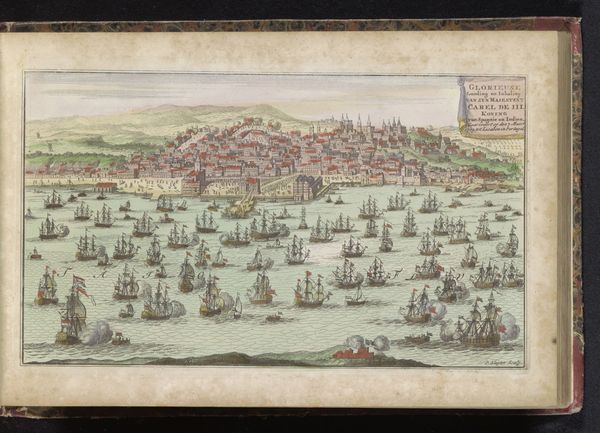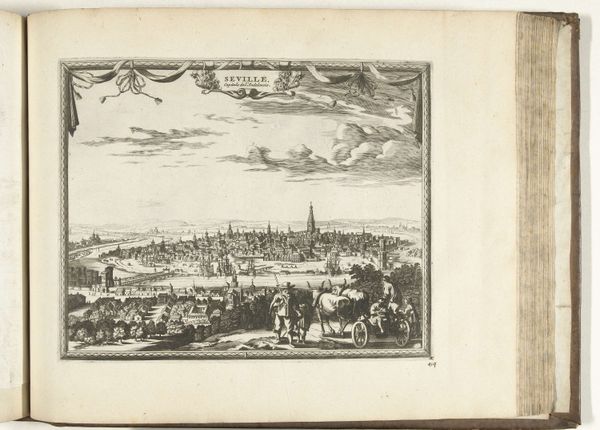
print, etching
#
baroque
# print
#
etching
#
landscape
#
coloured pencil
#
cityscape
Dimensions: height 168 mm, width 266 mm
Copyright: Rijks Museum: Open Domain
Curator: This print presents a panoramic view of Prague. Created around 1735, this etching, simply titled "Gezicht op Praag" meaning "View of Prague" is evocative of the baroque landscape tradition. Editor: It feels so ordered, almost… regulated. The cityscape is carefully framed by that lush tree on the left, creating this sense of composed dominance. I'm struck by how much emphasis is placed on control over the landscape and the depiction of societal harmony through urban planning. Curator: Precisely. Cityscapes like this were quite popular in the Baroque period. The intent was often to showcase the power and order of a particular city and, by extension, the ruling powers behind it. The detailed rendering of architectural landmarks—note the distinct towers and churches—serves as a testament to civic pride and religious authority. Editor: It's also interesting to see how people are depicted. They seem quite small in relation to the buildings, suggesting their diminished power in comparison to civic structures. They’re rendered as types—shepherds, travelers—rather than as individuals with their own distinct identities, don't you think? The emphasis on these small groups along the road draws my eye towards those who exist at the edges of the formal power structure within this cityscape. Curator: Absolutely, the hierarchy is implicit. It’s worth remembering the social functions of these kinds of prints; circulated amongst educated and affluent audiences, they represented the prevailing vision of an ordered society. It would not be unexpected to find this framed on the walls of ruling elite homes. Editor: What does stand out is the subtle coloring in a relatively large print. Did that impact who would engage with this in period? And, furthermore, does the relatively gentle use of hues help to mitigate what might otherwise read as stark societal order in a period when Europe saw increased social and intellectual turmoil? Curator: It’s possible the addition of color heightened the sense of luxury for some collectors and may have subtly shaped perception, softening edges in alignment with aristocratic sensitivities. But the fact remains that access to prints such as this still functioned as a mark of status. Editor: Seeing Prague like this reminds me to ask: Whose view are we really seeing? What lived experiences are erased in the portrayal of societal achievement? And can we see within a ruling classes portrait of itself any foreshadowing of counter narratives ready to upend such power? Curator: The value in these historical objects is less in a literal transcription of a place in time and more the representation of cultural ideals in practice. Editor: An idea visualized but with far reaching impact still.
Comments
No comments
Be the first to comment and join the conversation on the ultimate creative platform.
